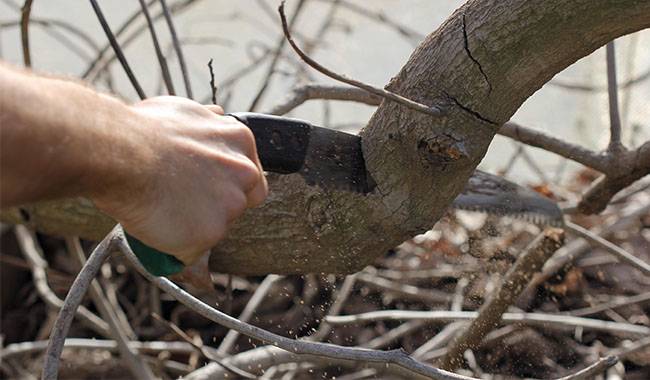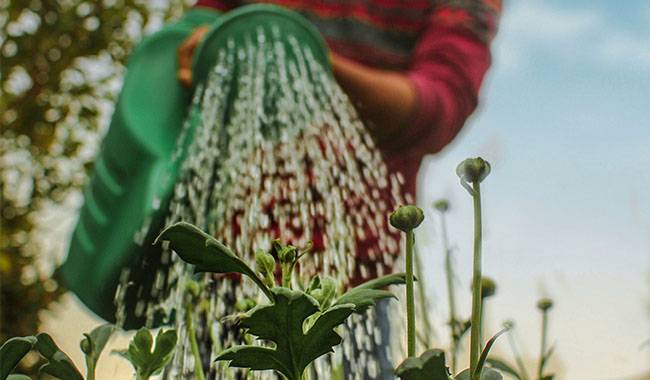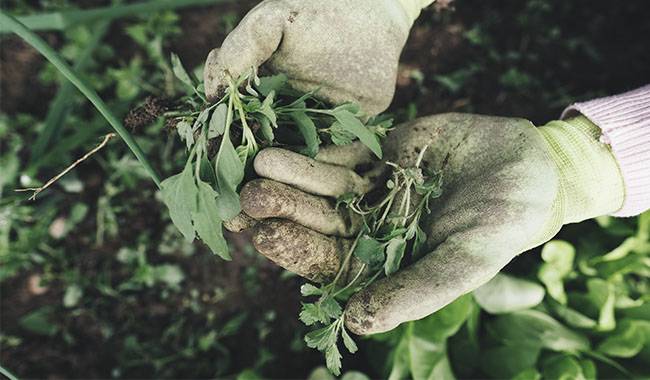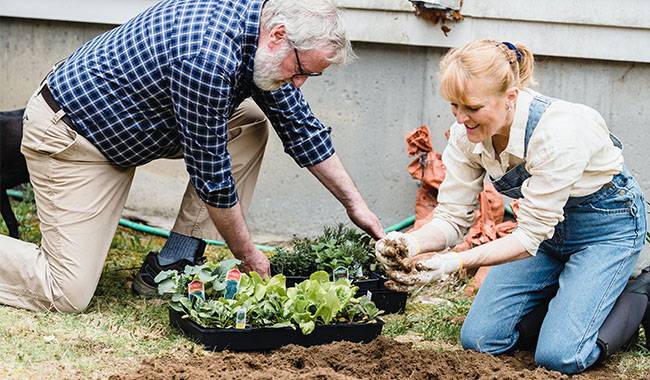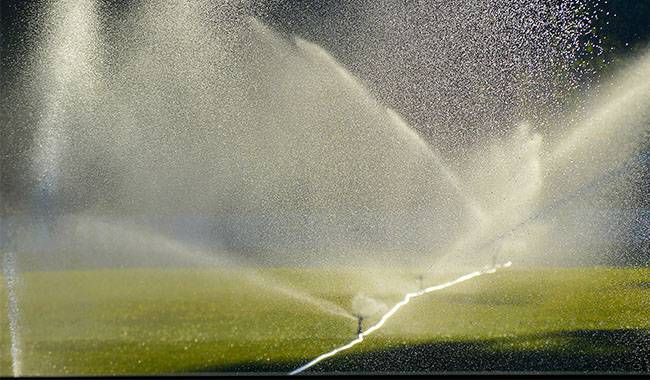
Water is life. Without water, everything in the world would not exist at all. For the plants we grow, water is just as important. And unlike weeds, which have adapted to thrive on rainfall alone, most cultivated plants will not develop or fruit without irrigation, even if they don’t die. This ThumbGarden article is about how to properly irrigate your soil so you can get the most out of your irrigation.
What Are Some Watering Methods?
First, let’s look at what types of irrigation are available, and then – the pros and cons of each type.
Today, the following types of irrigation are mainly used for garden and horticultural care.
- Watering with a hose.
- sprinkling (watering with a watering can or we put a swivel sprayer with a hose on a lounge chair, doze with a newspaper and move it from one place to another periodically).
- drip irrigation (almost the most advanced type with the most different variations: root irrigation, sub-soil irrigation, etc.)
- snow accumulation (this is also real watering, just less visible to you and me, and sometimes even more perceptible to the soil).
So, we have learned about the types of watering, but before we go into more detail about their advantages and disadvantages, let’s talk about the complexities of watering itself. For example, the regularity of irrigation, because the best and longest irrigation, if not regular and only temporary, can have a negative effect; the soil can dry out and kill the root tips, which are then irritated and the plant is harmed.
Your climate also plays an important role: if you already have frequent rainfall, why let the soil get excessively wet? Or if the soil is swampy and it’s already full of water, how much more can you do? If there is a lot of sand in the soil, you need more water, if there is a lot of clay, you need less water.
Tip: Soil with a lot of lime or sand dries out about twice as often, but clay dries out twice as slowly.
In general, water is not only a matter of nutrition. We all know that plants consume substances dissolved in water, right? Water also provides protection from bright sunlight. Unless, of course, it is reduced to the smallest droplet by unskilled sprinkling. You shouldn’t water your garden in hot weather because the water lowers the soil temperature, sometimes literally knocking it down to critical levels.
Watering with a Hose
How easy it is to turn on the tap to water the plants. Better yet – under the roots, or even directly on the leaves, well not under the scorching sun. In fact, this watering practice does more harm than good.
Prolonged watering will moisten the soil to a depth of 8-12 inches (20-30 cm), which is enough for most crops, but what a shock to the plants! Try running under a freezing cold shower after a run in the summer heat. Watering with a hose has only one benefit – we moisten the soil, but no more.
If you want to hurt your plants as little as possible, water with a hose only in the evening, when the soil doesn’t get hot from the summer heat, and place it on the very surface of the soil, near the stems. And keep the pressure to a minimum so that the water does not erode the soil and cools the hot soil while enriching it with moisture.
Water Sprinkling
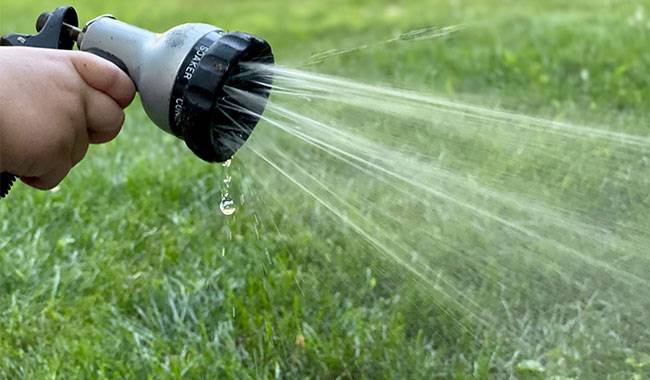
It sometimes happens that proud cottagers, often hidden in the shade themselves, generously water their vegetable gardens with bulky showers of ice water. No, that’s fine if the drops are large, warm, and pumped from buckets heated and painted black during the day, but if they are then pumped from a hose, the water is as cold as ice? The leaves may even shrivel from such an exorcism.
The benefits of sprinkling are undeniable, especially if you grow “thick-skinned” crops like potatoes, corn, and root crops on such plots. Irrigation by sprinkling prevents waterlogging and salinization of the soil in the area and is more beneficial because water droplets falling from higher ground, even if only a few millimeters, can still penetrate deep into the soil.
In addition, by sprinkling, preferably in the evening, with water heated to room temperature and the fertilizer dissolved in it, you can also make a fairly effective foliar spray. Don’t forget this, too.
In addition to those disadvantages we have already described, remains the very large amount of water required to soak an area, the high cost of labor – you have to stand for a long time with an irrigation hose, and the high cost – of additional sprinkler systems are provided.
Root Watering
This method is effective and very efficient but is most often used in small areas with some shrubs and flowering plants, either alone or in a flower bed. The most common use of root watering is for gardeners to the cottage for a day or two and then leave their favorites for a full week, sometimes longer. While fertilizer can be saved in some way, water is usually harder to come by.
But, as you know, laziness is the driving force behind progress, so dozens, if not hundreds, of different devices, have now been developed that can hold water in your absence and slowly consume it by pouring it into the root zone, keeping the balance in the tank at a certain level if it rains.
Let’s start with the fixtures that can be purchased – usually, these are cones of different sizes, with holes of different sizes on their surfaces, depending on the diameter of the cone. For greater effect, the cheapest Chinese solar lights are also hung on the end of such cones. They are said to remind gardeners to water as they walk around.
The essence of the cone is this – very carefully, so as not to damage the roots of the cultivated plants, dig the cone into the bush, fill it with water and leave it quietly for your unit. The water slowly penetrates through the holes – the fewer the holes, by the way, the less water is wasted – and nourishes the roots of the plant.
The advantages are obvious: the water stays on-site longer, but the disadvantages are the same: in hot weather, the water sometimes evaporates the next day, it doesn’t fill up with rainwater if you cover it with a lid, and of course the price – it will be more expensive.
Why pay when you can do things differently and just as effectively? Everyone has a dozen plastic bottles with conical necks at home, although I think straight bottles would work too. You cut off the bottom and make a dozen holes a few millimeters wide in the bottle (preferably with a red-hot awl). Next-most importantly, dig in those areas of the plot where the plants are growing so as not to damage the roots. You fill the soil, you can use fertilizer, strictly following the instructions and the season. My advice is to tightly close the open part with a net, which we use to keep out rodents – so that debris and insects don’t get in there. You can simply fill the container with water, drive away from the hut and sleep for a few days without thinking about watering.
Drip Irrigation
This system is complicated, on the one hand – it’s very cheap, but on the other hand – it’s ridiculously expensive. First of all the essence: water (sometimes water with dissolved nutrients) is pumped directly to the biting zone of the plant through a tube with holes (drip tube).
So it saves time (compared to manual watering), saves a lot of water (if the water isn’t free, you’ll feel the difference), and the plants are happy – in their productive zone, water flows through the drippers, no more and no less, but as much as is necessary. These tubes, or drip tips, can be placed directly on the surface of the soil or made deeper, and some people even bury them, but more often than not, this is how the water (and perhaps the nutrients dissolved in it) flows slowly out of them.
Drip irrigation may not be particularly necessary for a bunch of lands where cucumbers are grown, but it makes a lot of sense for perennials, vineyards, and similar crops, especially where the ground “slopes” and water tends to run down slopes or accumulate in holes.
In addition, supplying water through drip irrigation is essentially a continuous process, so there are no sudden increases or decreases in water dosage, and plants get as much water as they need.
Regarding the cost of the method itself. On my farm, nothing could be simpler: place a bucket capable of holding two hundred liters of water in the roof gutter, or better yet, place two drains together, raise the bucket 20-40 inches (0.5-1 m), and punch as many holes as possible in the bottom of the bucket to allow the drippers to be scattered between the rows. When the job is done, fill the bucket with water, cover it with mosquito netting to prevent debris from getting in and clogging the drippers, and forget about it until the bucket is full or when you need to add nutrients to the water.
The second option is more complicated, but it’s timeless. First, you have to dig a well with water and lay it in the garden, put a 132 gals (500 liters) bucket with a pump, heat the water to 77-86 °F (25-30°C), and already drip the water from there to all the trees. One disadvantage is that if the power goes out and the pump stops, then you have to buy a generator, but sometimes on sandy soils it is really worth it.
Subsoil Irrigation
The more sophisticated method of drip irrigation is essentially the same, but instead of laying on the surface or sinking slightly into the soil, the drip tube is almost completely buried there. This method is ideal for irrigating plants with deeper root systems, such as walnuts.
It has been observed that drip irrigation with tubes heavily pressed into the soil produces slightly less plant growth, but more yield increase. Apparently, the plants simply do not need to put in the extra energy to establish a strong root system and groundmass, but rather expend it on yield.
Snow Accumulation
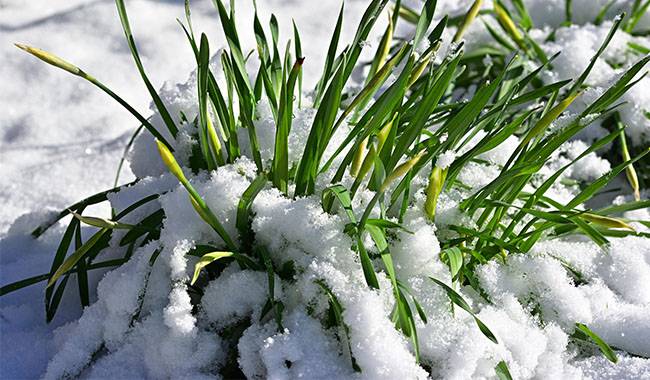
As strange as it may seem, snow retention is a very insignificant measure, but it is also considered extra for irrigation. Snow usually accumulates a lot in the spring, but in the case of careless owners it rolls down the slope towards the neighbors, washing away young plants and exposing the root system.
So don’t be lazy and take a walk down the snowy paths of the Austrian Wallenki in early March, but step on them properly to create a roller barrier where the melted water will not be swept away but will stay and fill the soil with moisture. Again – even more so in the countryside, where almost no one shows up until May before potatoes start to be planted.
In addition to shoveling snow, you can also pay attention in autumn and plant stubble, leaving no more than 30-35 inches (75-90 cm) of stubble, which is likely to hold back the snow, even if it is not a slope at all, but a simple flat area.
Also, spruce branches: winter celebrations leave a lot of fir trees; you can scatter them around the property or simply walk over them and press the snow through to make it melt more slowly.
Conclusion. That’s really all the watering tips. If you said you didn’t mention watering cans, then they are not used very often these days. Now, half of the gardeners have bad backbones and it’s easy to get the roots dirty with a watering can. But if you think this is a drawback of the material, feel free to write about it in the comments.
In general, I hope to get more comments and suggestions from you. For example, I heard of a man who spread crumpled moss on the soil and watered it before leaving his large estate. Maybe you have done something similar?




